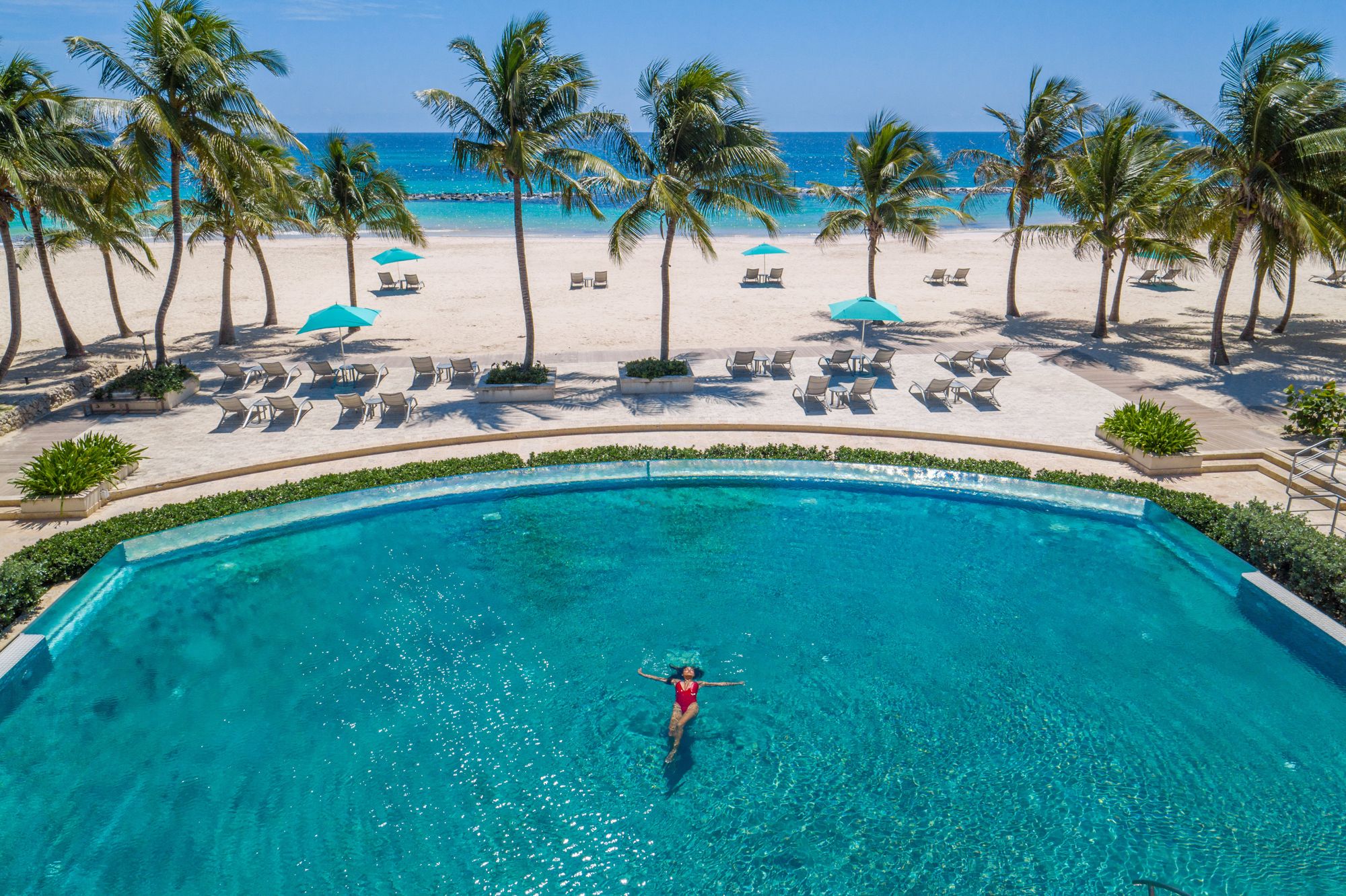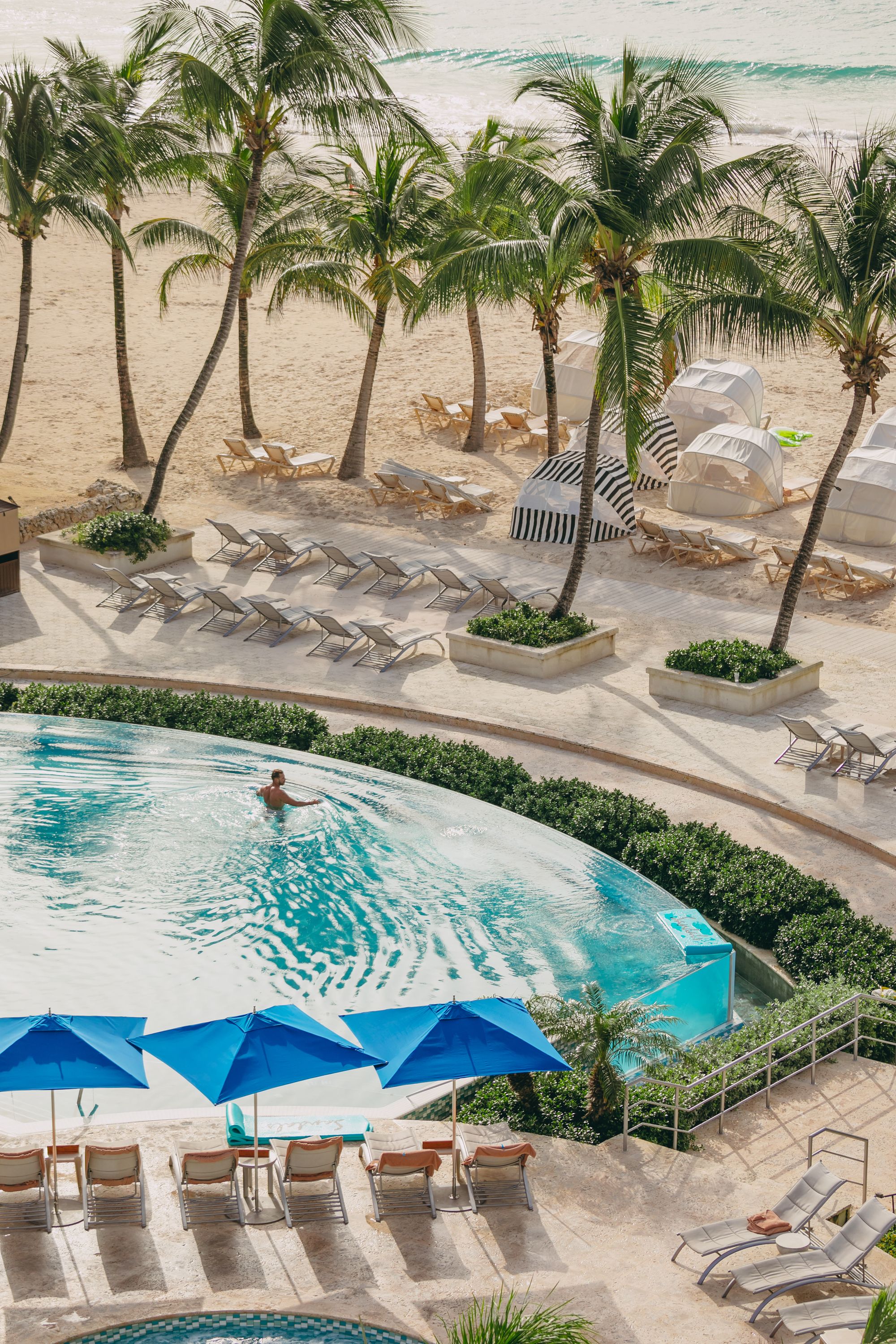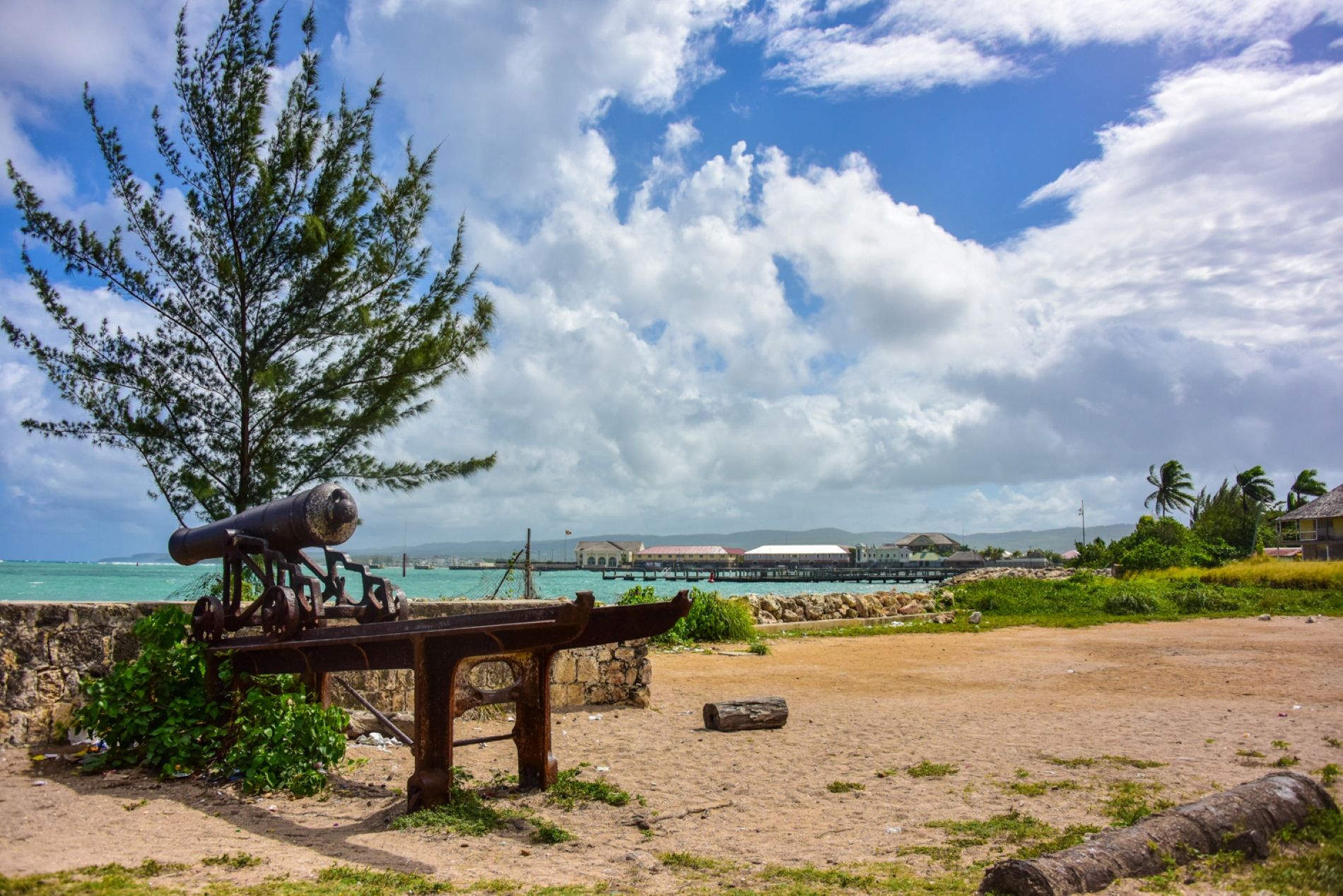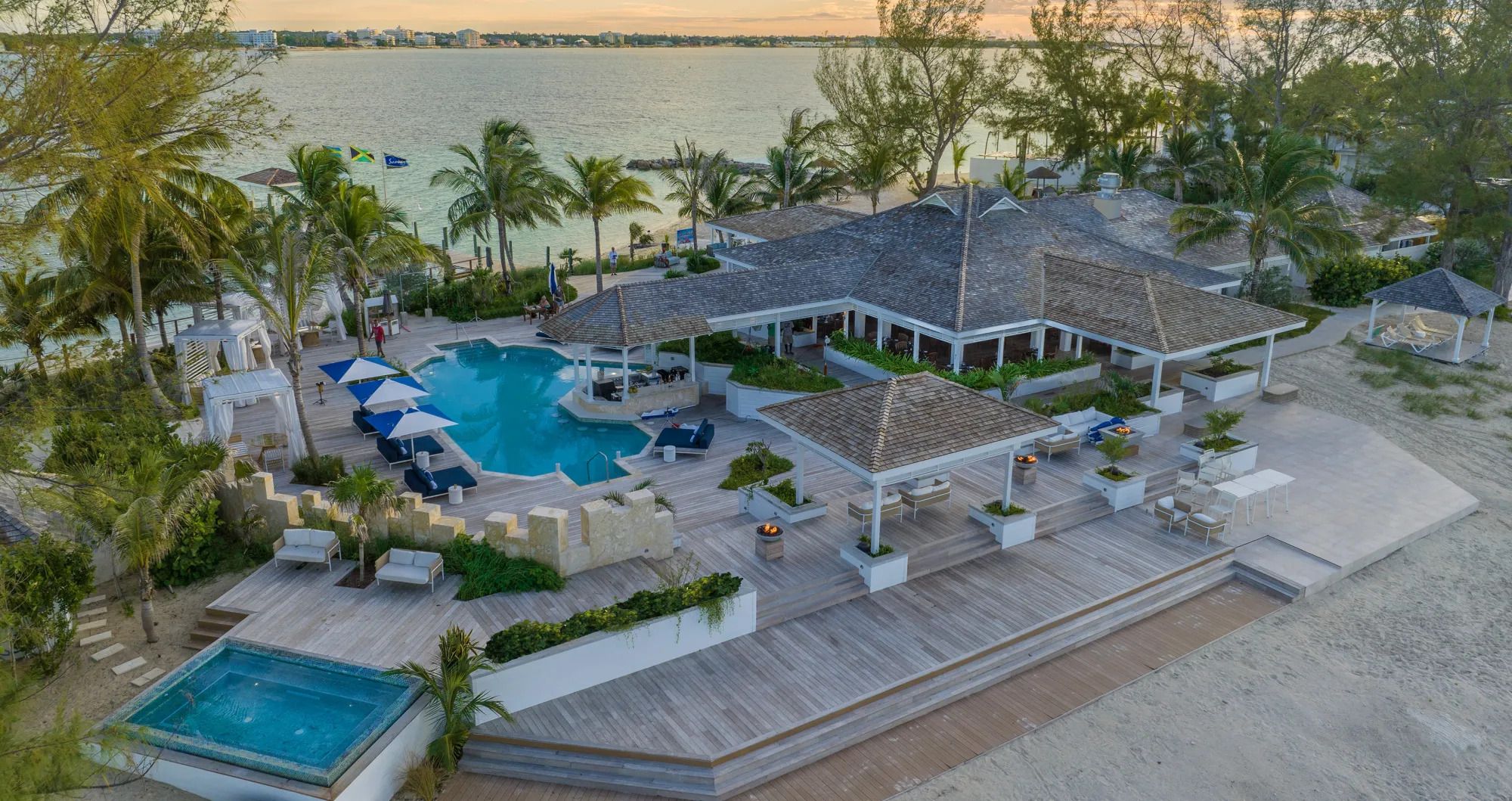Your Guide To The Best Seven Caribbean Islands For Surfing
It has been said many times in surf circles that a board, bravery, and a breaking wave are all a surfer really needs to make the most of any surfing experience. This is true for some of the most popular surfing destinations in the world, like those in Hawaii and California, and it still rings true for relatively lesser-known surfing island destinations in the Caribbean.
The Caribbean islands are known to have amazing beaches with calm waters, which will have many people surprised to find that many of the islands are also great for surfing. Perhaps it shouldn’t be surprising at all, what with the consistent trade winds, warm waters, and surf breaks this region is known for. Not to mention how easy it is to get to some of these islands from many states in the U.S., like Florida. Either way, the Caribbean is most certainly a destination that surfers should get more familiar with, and by the end of this post, you’ll see why.
1. Barbados
Barbados is a small island in the southeastern Caribbean. It is near islands like Saint Lucia and Saint Vincent and the Grenadines. Barbados, a limestone island, is without a doubt the best island for surfing in the Caribbean.
Bathsheba Beach

Bathsheba Beach on the northeast coast of Barbados has a reputation for producing world-class waves. It has been praised by several famous surfers who have been fortunate enough to surf here. This area has the potential to form big, steep, and tubing waves - a surfer’s dream. Also, the many surf breaks on this beach, particularly the ‘soup bowl’, definitely help to provide an excellent surfing experience.
If you’re brave enough, you’ll love taking on the ‘soup bowl’. The soup bowl breaks along a coral reef, which causes the waves to barrel in a way that experienced surfers can ride smoothly before the breaking point. Bathsheba is about a 30-minute drive from Bridgetown, Barbados, which is the capital city of this island nation.
Dover Beach

Best beach for beginners. Located an 8-minute walk from Sandals Barbados and Sandals Royal Barbados.
Barbados is known for its white, sandy beaches with serene and calm waters, but there are some beaches, like Dover Beach, where there are good enough waves to get some surfing in. Dover Beach is less than 20 minutes from Bridgetown, Barbados.
Dover Beach is on the southwestern coast of Barbados and this spot is widely considered the ideal place for beginner surfers. The conditions here tend to be a little calmer than in other surfing spots like Bathsheba.
Expert tip: Surfboard rentals are available at Dover Beach for $30 USD a day or $150 USD per week. Surf lessons are also possible as there are several surf schools on this beach. Lessons cost around $75 USD for 2 hours. Stay at one of Sandals' all-inclusive resorts in Barbados and cool down with unlimited cocktails after (or before) your surf session. Combined, the resorts include 20 restaurants, 11 bars, and a bowling alley - and it’s all included in your stay!
Duppies
Incredible surfing off a Caribbean coast is more than a possibility in Barbados. There are many surf sites to choose from on this island including Duppies on the north coast near Harrison’s Point Lighthouse. When you hear anyone mention Duppies while on the island, keep in mind that they’re very likely referring to the powerful waves that are a consistent feature in this area.
Duppies can be hard to find and it may take a bit of asking around to get there. This area has strong currents, so it is recommended that only more experienced surfers ride the waves here. If you plan on surfing in this area while in Barbados, you may need to paddle out about 100 yards, hanging close enough to the cliffs, ahead of trying the wave. This is necessary to avoid the strong currents pulling you out to a more turbulent and dangerous area that locals have dubbed ‘the Boneyard’. The best way to navigate Duppies is with guidance from local surfers. This site should definitely only be attempted by the more daring and experienced surfer!
Expert tip: When considering the best area to stay in in Barbados, you should choose somewhere that provides convenient access to all the attractions you’d like to see and the beaches you’d like to surf if you’re going for a surf adventure.
The best time to surf in Barbados

The best time to catch great waves in Barbados is in the ‘winter’. This would be winter for other destinations, but not sunny islands like Barbados. Many people escape colder weather by vacationing between the months of November right on through May, and these months also happen to be the best time to surf in Barbados.
Even though there is a surf season of sorts for this island, you can find consistent waves in many parts of Barbados, including Bathsheba, year-round. For spots like the ‘soup bowl’, the best time to surf is during low to mid-tide when you’re likely to find the best waves. Early and mid-morning surf times are most ideal as well. The beach tends to be less crowded and less windy during this time as well.
The best time to visit Barbados overall is mid-December to mid-April, which is also peak season for this destination.
Good to know: Barbadian waters are on average 80°F (27°C) during the year. This means wetsuits are not crucial for a surf session, but surf shoes or some kind of foot covering are recommended to protect you from sea urchins and sharp coral edges.
2. Puerto Rico

Puerto Rico is high on the list of best surf destinations in the Caribbean. With warm waters year-round, this is one of those destinations where you’ll have lots of beach options for surfing. The exciting surf scene in Puerto Rico will definitely add something special to your experience as you choose from beginner, intermediate, or more advanced surf locations. Surfing conditions in Puerto Rico can range from waves about 2ft high over a mostly sandy bottom, to taller and more intense barrels with reef breaks. It all just depends on where you go. In Puerto Rico, beginners will love Middles Beach in Isabela, while the Gas Chamber in Aguadilla offers a little something for everyone.
The best time to surf in Puerto Rico
You can surf in Puerto Rico any time of year, but the conditions for surfing tend to be best from August through to April. As a general rule, the cooler months (from late fall to early spring) are the ideal time to hit the waves in this sunny destination.
3. Jamaica
Although the island is known and loved for its beautiful beaches, it is not yet known as a great surf destination - but it is. In case you were wondering where Jamaica is located, this island is near Cuba, Haiti, and the Dominican Republic in the southern Caribbean Sea. Some of the things that make this island great for surfing are its extensive coastline (635 miles), year-round trade winds, consistently warm waters, and amazing surf sites:
Bull Bay

Bull Bay in Jamaica is also known as Copa Bay. This is where surfing in Jamaica really started to gain momentum - mostly because the first surf school on the island was established here. This surf school, known as Jamnesia, frequently hosts surf camps where you can take surf lessons. With the tagline ‘Home is where the surf is’, the Jamnesia Surf School is still operational and offers surf lessons that cost around $30 USD per hour.
Bull Bay is on the south coast of Jamaica, around 40 minutes from Kingston, the capital. There’s great surfing year-round in this area, and it’s known for long and exciting rides with plenty of reef breaks.
Boston Bay

Another popular surf spot in Jamaica is Boston Bay on the north coast. This area is about 35 minutes from Port Antonio on the northeastern coast. Boston Bay is great for beginners as the waves tend to be a little calmer. Surfboard rentals are available on this beach and there are facilities like changing rooms, bathrooms, and showers as well. Surfboard rentals cost around $15 USD per hour. There’s also a surf shop here for anyone looking to make purchases.
There’s a small entrance fee to get into Boston Bay (about $2 USD), and, while in this area, you can check out the jerk center, the restaurant, or just relax beachside. There’s a gazebo and lifeguards at this beach as well.
Makka Beach
Makka Beach is a surfer’s paradise. This beach is on the southeastern shore of Jamaica in a town known as Yallahs, less than an hour away from Kingston by car. Makka Beach has lots of breaks that make it possible for surfers to have long rides and catch the perfect wave.
Though Makka Beach is on the small side, this area was the site of Jamaica’s first professional surf competition. This competition, known as the Makka Pro Surf Contest, has since grown to be one of the biggest surf competitions in the Caribbean. It is a two-day event that is attended by around 20,000 people annually.
The best time to surf in Jamaica

Jamaica is a great place to surf any time of year thanks to the consistent trade winds around the island. If you want to have the best chance of riding incredible waves while in Jamaica, the best time to go is between December and March when there is a lower chance of rain. During the summertime in the warm months of July to September, you’ll also be able to have a great surf break in Jamaica.
Outside of surfing, the best time to visit Jamaica is between the months of mid-December to mid-April. There’s more going on on the island at this time, and you’ll also be most likely find a lively atmosphere at one of many great all-inclusive resorts in Jamaica to spend some time relaxing at the end of your surf trip.
4. Dominican Republic

Looking to ride some perfect waves during your vacation? Don't look past the Dominican Republic. In this tourist hot spot, there are quite a few beaches where you’ll not only get some exciting surf action but the opportunity to socialize with the locals as well. Some of the best surf locations in the Dominican Republic are on the north coast where you can expect great wind conditions on the regular and even more wave action in the winter months.
The best time to surf in the Dominican Republic
If you’re happy with moderate swells, you’ll find the Dominican Republic suitable for surfing at any time of year. If bigger waves are what you desire, however, you will get the best experience by surfing in the Dominican Republic between October and April. If you are a first-time surfer, you may wish to start with the smaller waves and work your way up to the bigger ones that tend to arise in the winter months.
5. Trinidad & Tobago

Along the north and northeastern coasts of Trinidad, you’ll find some of the best beaches for surfing in the Caribbean. Some of the most well-known spots are near the village of San Souci. In this area, you’ll not only be able to catch some pretty awesome waves, you might even be able to find some surfer-friendly accommodations as well. If you decide to visit sister isle Tobago while in Trinidad, you can find some decent surfing at Mount Irvine Beach. Trinidad & Tobago are good options if you want a vacation that includes kitesurfing too.
The best time to surf in Trinidad and Tobago
The time of year you surf in Trinidad and Tobago will depend on how certain you want to be about the conditions. During the hurricane season (from June to November), surfing is definitely possible, and waves will range from smaller swells to very large swells created by Atlantic hurricanes or storm activity. Generally, the best time to visit Trinidad and Tobago for surfing would be between December and April when the passing trade winds produce more consistent waves along the coast.
6. The Bahamas
The Bahamas is a dream vacation destination for many, including surfers. This is an island territory made up of 700 islands and even more cays. If you’re wondering where The Bahamas is located, it is in the Atlantic Ocean very near to Florida. The Bahamas is home to some amazing surf spots which we’ll detail below:
Surfer’s Beach, Eleuthera

The name says it all! Surfer’s Beach in The Bahamas appeals to surfers of all experience levels. This beach is located on the island of Eleuthera, which is to the east of New Providence and the south of Great Abaco. Surfer’s Beach is to the east side of Eleuthera, an island that is only a mile wide, and toward the northern end.
Surfer’s Beach is a little off the beaten path and is about 2 miles long. Once you get to Eleuthera though, you won’t have a hard time finding it as locals can point you in the right direction. The appeal of this beach has to do with beach breaks that are said to be comparable to that of surfing hotspots in Hawaii and Costa Rica. Surfers can expect reef breaks and point breaks here as well.
Elbow Cay, Great Abaco

Great Abaco can be amazing for surfing especially near Elbow Cay, which is a 6-mile long islet off the coast of this island. Elbow Cay is to the extreme north of The Bahamas, and the appeal here, of course, has to do with the many reef breaks that help in the formation of the amazing waves you often get to ride here. You can also expect to have beach breaks near the island’s main settlement, Hope Town.
Rum Cay
Rum Cay is in the southeastern end of The Bahamas, and it is just about 30 miles off the west coast of San Salvador. There’s quite an interesting story attached to how Rum Cay in The Bahamas got its name. This remote island, which is about 30 square miles, is said to have gotten its name when a ship, filled with rum, sunk off the coast of the island. Whether or not there is any truth to this legend, the cay has never quite been able to shake off that reputation. Even still, that unfortunate happening hasn’t hampered the surf scene here at all, in fact, it has continued to grow over the years. There are around 14 surf breaks around Rum Cay which makes it very conducive for fun surf sessions.
The best time to surf in The Bahamas

Generally, the best time to visit The Bahamas is between the months of December and April - especially if you want to participate in the Junkanoo festival. The best surfing, though, can be found in The Bahamas from October to April. This is when you can ride the biggest waves and make the most of the surf season in The Bahamas. If you travel to the islands outside of this time, there’s still a chance of encountering some great waves, but this might be less consistent.
7. Antigua

Antigua is more of a kite surfing destination rather than standard surfing, but it is possible to have some surfing fun on this island. You can start off your surfing expedition in Antigua at Jabberwock Bay where you can find lessons for surfing and kite surfing. The beach in this area tends to have “side on” wind conditions that can make for a safe and exciting surf experience. This beach is a great option for beginners who are learning to surf and also for more advanced surfers who want more space to move around. Overall, you’re likely to catch the best waves on the Atlantic side of Antigua, in the southeast.
The best time to surf in Antigua
While you can find surfable waves outside of this period, the very best surfing in Antigua happens in the cooler months from November to February. You can find nice waves on Antigua's sister island of Barbuda around this time as well.
The best surfing vacations in the Caribbean

Picture: The beachfront infinity pool at Sandals Royal Barbados. The best part? All drinks are on us!
There you have it: the best surfing destinations in the Caribbean islands. Where you choose to go will ultimately depend on which island experience calls your name the loudest, but many Caribbean islands promise both great waves and a great time.
Barbados absolutely stands out as one of the best surf islands in the Caribbean. Beginners enjoy the surf at Dover Beach, and more experienced surfers will love the challenge of the Soup Bowl and Duppies. Whatever level you’re on, you’ll have a great time!




